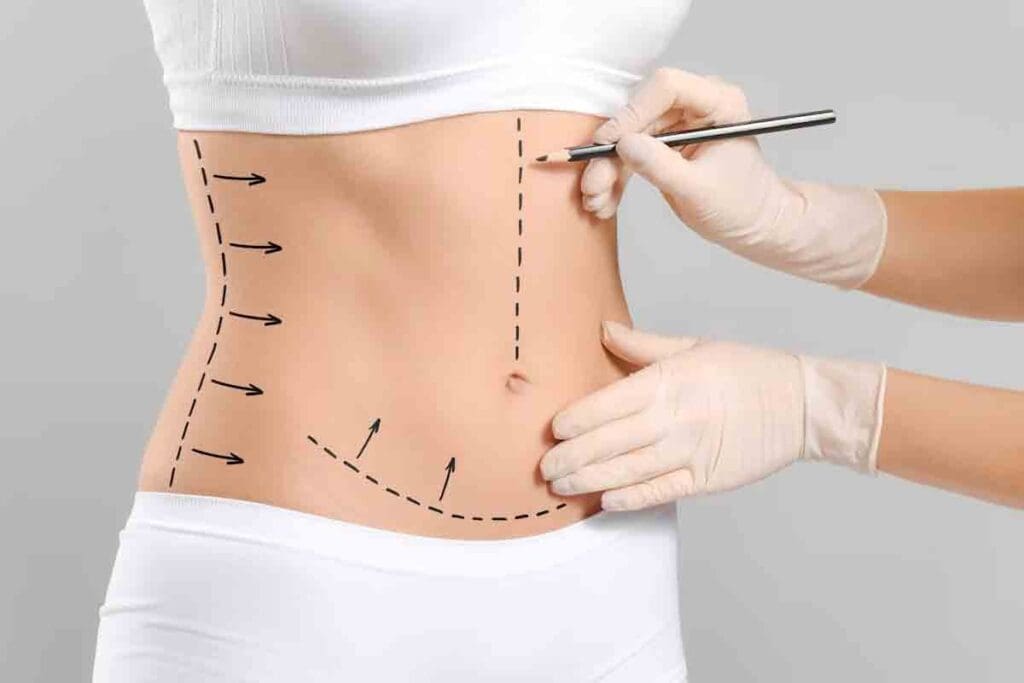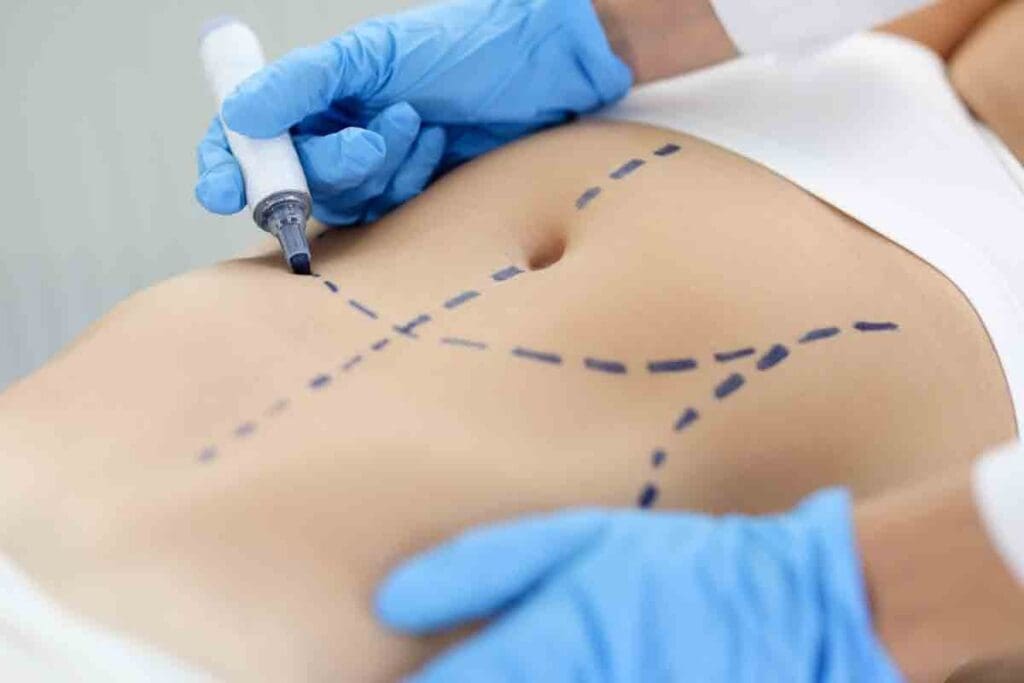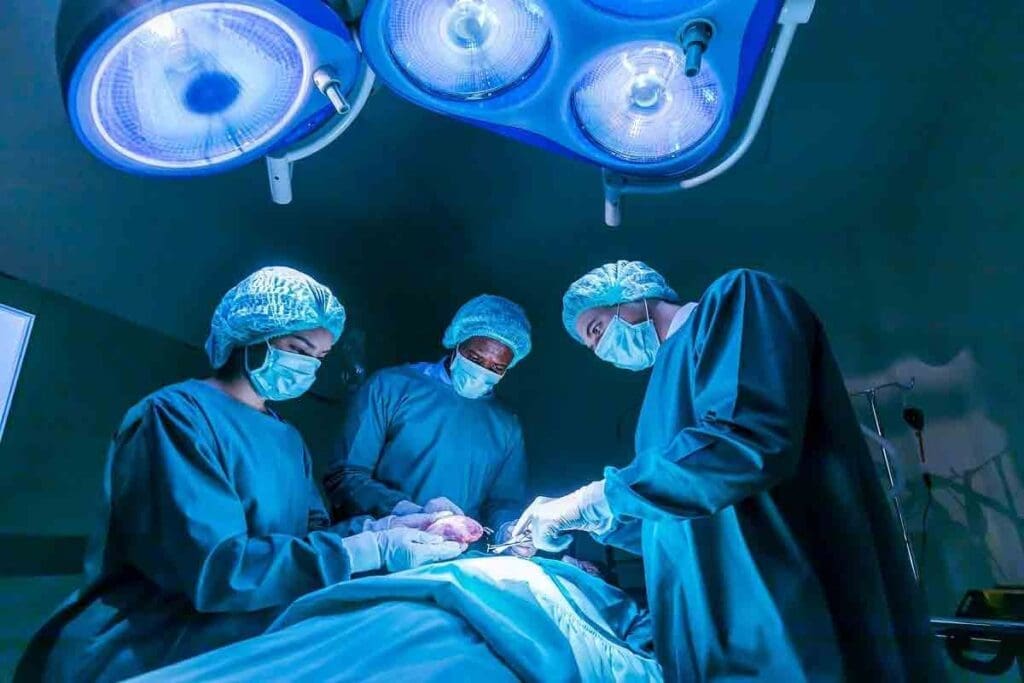Last Updated on November 26, 2025 by Bilal Hasdemir

Recovering from abdominal surgery is a complex journey. It affects your body, mind, and emotions. The healing time varies greatly, depending on the surgery type and your health. Does abdominal surgery takes a year to heal fully? We explore the surprising truth about recovery timelines and what to expect post-op.
A study in the Journal of the American Medical Association found something interesting. Only 42% of patients fully recover in all areas within 4 to 8 weeks after surgery. This means many patients might take longer to get better, facing ongoing symptoms or issues.

Knowing how long it takes to recover from abdominal surgery is key. It helps patients set realistic goals and manage their healing journey. The recovery is not just one event but a series of steps, each with its own hurdles and achievements.
The recovery from abdominal surgery is divided into three main phases. These are the immediate post-operative phase, the early recovery phase, and the long-term recovery phase. Each phase has its own set of symptoms, challenges, and healing rates.
In the immediate post-operative phase, patients are watched closely for any issues. They are also given pain relief medication. This phase is very important and usually happens in the hospital.
The early recovery phase comes next. Here, patients start to feel better, slowly getting back their strength and mobility. They focus on managing their pain at home.
The long-term recovery phase can last for months. During this time, patients slowly get back to their usual activities and regain their full strength.
Healing fully after abdominal surgery, like open surgeries or those involving internal organs, can take a long time. It often takes a year or more. This is because the surgery is complex and the body’s healing process is slow.
“The internal healing process continues long after the external wounds have closed, which is why full recovery can take up to a year or even longer in some cases.”
Here’s a detailed look at the recovery timeline:
| Recovery Phase | Duration | Key Characteristics |
| Immediate Post-Operative | First 72 hours | Hospital stay, pain management, and close monitoring |
| Early Recovery | Weeks 1-2 | Gradual improvement, regaining mobility |
| Long-Term Recovery | Several months to a year or more | Return to normal activities, full strength recovery |
The recovery from abdominal surgery is complex and unique to each person. Knowing about the different phases and what to expect can help patients manage their recovery better.

The first three days after surgery are key for healing. Patients are watched closely for any issues. They also get help to manage their pain well.
Liv Hospital uses the latest care methods to help patients heal faster. They make sure patients get all the care they need right after surgery.
How long you stay in the hospital after surgery depends on the type and your health. Most people go home in 2 to 4 days.
| Type of Surgery | Average Hospital Stay |
| Laparoscopic Surgery | 1-2 days |
| Open Surgery | 3-5 days |
| Complex Abdominal Surgery | 4-7 days |
Managing pain well is very important in the first 72 hours. Patients get different medicines to help with pain. Moving around early is also important to avoid blood clots and help with healing.
Key aspects of initial mobility include:
Effective pain management and initial mobility are interlinked, as better mobility can lead to reduced pain over time.
The first few days after surgery are very important. By focusing on pain management and getting patients moving, doctors can help with the abdominal surgery recovery time.
The early recovery phase after abdominal surgery is key and lasts about one to two weeks. During this time, doctors watch for any complications. They also work to manage pain and discomfort well.
In the first couple of weeks after surgery, patients face big physical challenges. They might find it hard to move, bend, or lift things. It’s important to listen to the surgeon’s advice on rest and slow movement to avoid problems.
During the early recovery, patients often feel pain, swelling, bruising, and discomfort around the surgery area. It’s important to manage these symptoms well for a smooth recovery. Doctors usually give pain medication to help with this.
Pain management is a big part of getting better. Patients should take their medicine as told by their doctor. Cold compresses or resting in a comfy position can also help with pain.
Most people can get back to their usual activities in 1 to 3 months after surgery. But, this time can change based on health, surgery type, and care after surgery. By knowing the recovery process and following post-surgery advice, patients can heal better and avoid complications.
Weeks 3-8 are a key time in recovery. Patients start to feel less pain and can move more. They slowly get back to their daily lives.
Patients start doing light exercises like walking or stretching. It’s important to listen to the doctor’s advice on how much and how often to do these activities.
Doing light activities can make patients feel better. But it’s important to rest too. This helps the body heal.
Only 42% of patients fully recover in 4 to 8 weeks. This shows that recovery is different for everyone. Age, health, and surgery type can affect how fast someone recovers.
In the mid-recovery phase, patients may feel more able to do things. But they should keep following the doctor’s orders and go to check-ups.
| Activity Level | Week 3-4 | Week 5-6 | Week 7-8 |
| Light Activities | Gentle stretching, short walks | Gradual increase in walking distance | Introduction to light household chores |
| Moderate Activities | Avoid heavy lifting | Gradual introduction to moderate exercises | Increased intensity of exercises |
Knowing the recovery timeline helps patients. By week 8, many have made big progress. But full recovery can take longer.
Recovering from abdominal surgery can take a long time, sometimes up to a year or more. This is true for open surgeries and those involving internal organs.
Even when the outside wounds heal, the inside healing goes on. This can take months to a year or more. It depends on the surgery’s complexity and the person’s health.
Key aspects of internal healing include:
As the body heals, patients slowly regain their strength and function. This depends on age, health, and any complications after surgery.
Important milestones include:
Following the doctor’s advice is key during this long recovery. It helps ensure the best results.
Understanding the long recovery time helps patients manage their expectations. It makes the recovery process more manageable and confident.
Many things can affect how long it takes to heal after abdominal surgery. The healing process is complex. It depends on the patient’s health, the surgery’s complexity, and any complications after surgery.
A patient’s age and health are key in determining recovery time. Older patients or those with health issues may take longer to heal. This is because they might have less energy and a weaker immune system.
For example, diabetes can slow healing by affecting blood flow and tissue repair. Liv Hospital focuses on improving health before surgery. This can help patients recover faster.
The surgery’s complexity and technique also matter. More complex surgeries take longer to heal. The type of surgery, like open or minimally invasive, also affects recovery time.
Minimally invasive surgeries usually cause less damage and have shorter recovery times. Here’s a comparison:
| Surgical Technique | Typical Recovery Time | Post-Operative Pain Level |
| Open Surgery | 6-12 weeks | High |
| Minimally Invasive Surgery | 3-6 weeks | Moderate |
Complications after surgery can make recovery longer. Issues like infection, bleeding, or adhesions need quick action to avoid lasting harm. Good care after surgery, including watching for complications and acting fast, is key to healing.
Understanding what affects healing time helps doctors tailor care for each patient. This can make recovery faster and better. Places like Liv Hospital lead in improving recovery by using the latest care methods and teamwork.
The choice between open and minimally invasive surgeries affects healing time. Open surgeries take longer to heal than laparoscopic or robotic ones.
Open surgeries have bigger cuts, causing more damage and a longer healing time. They often mean a longer hospital stay and more pain after surgery. Most people need several months to get back to normal after open surgery.
“The larger the incision, the longer the recovery time.” This is true for many surgeries, including abdominal ones. Open surgeries damage more tissue, leading to a longer recovery.
Minimally invasive surgeries, like laparoscopic and robotic ones, have big advantages. They have smaller cuts, less damage, lower risks, and shorter hospital stays. So, patients usually get back to their daily life in 1 to 3 months after these surgeries.
| Surgical Approach | Typical Recovery Time | Hospital Stay |
| Open Surgery | Several months | Longer |
| Minimally Invasive Surgery | 1 to 3 months | Shorter |
The type of surgery greatly affects abdominal surgery recovery time. Choosing minimally invasive options can help patients heal faster and get back to their lives sooner.
Recovery from abdominal surgery depends on the type of surgery and the organs involved. Each surgery has its own recovery needs. Patients need to know what to expect based on their surgery.
Surgeries on the liver and gallbladder, like cholecystectomies, need special care. Patients might need to change their diet to help the liver digest food. It’s also key to watch for any complications, like bile duct injuries.
Dietary adjustments might include avoiding fatty foods and eating a balanced diet. Regular check-ups with doctors are important to keep an eye on liver health and overall recovery.
Surgeries on the stomach and intestines, such as gastric bypass, require changes in eating habits. Patients might need to eat smaller meals more often. This helps manage symptoms like diarrhea or constipation and ensures they get the nutrients they need.
Nutritional counseling can help with these dietary changes. Doctors often recommend eating small, frequent meals and avoiding foods that can upset the stomach.
| Surgery Type | Dietary Recommendations | Common Complications |
| Liver Surgery | Avoid fatty foods, a balanced diet | Bile duct injuries, liver dysfunction |
| Gastric Bypass | Small, frequent meals, avoid sugar | Nutritional deficiencies, gastrointestinal issues |
| Bowel Resection | High-fiber diet, hydration | Bowel obstruction, infection |
Surgeries on reproductive organs, like hysterectomies, have their own recovery needs. These include managing pain, watching for infection, and dealing with fertility and hormonal issues.
Patients might benefit from pelvic floor physical therapy to regain strength. Emotional support is also key, as these surgeries can affect mental health.
Knowing the specific recovery needs for different surgeries helps patients prepare for their journey after surgery. By following a tailored recovery plan and seeking support, patients can heal better and get back to their normal lives sooner.
Recovering from abdominal surgery is a journey with key milestones. These milestones are important for a good recovery. Knowing them helps manage expectations and guides towards full recovery.
Being able to drive again is a big step in recovery. Patients usually wait until they stop taking strong pain meds. They need to be able to check mirrors and react to the road safely. This usually happens between 2 to 4 weeks after surgery, but it depends on the surgery and how fast you recover.
“It’s essential to follow your surgeon’s guidance on when to resume driving, as they can provide personalized advice based on your specific condition and progress.”
Going back to work is another important milestone. The time it takes varies a lot. It depends on your job, the surgery, and your health. Desk jobs might let you return in 2 to 4 weeks, but more active jobs might take 6 to 12 weeks or more.
Exercising and lifting heavy things are important, but need care. Patients should avoid lifting more than 10-15 pounds and strenuous activities for weeks. How long depends on the surgery and how you recover.
“Typically, patients can start with light activities like walking within a few weeks, but high-intensity exercises or heavy lifting should be avoided until cleared by their healthcare provider.”
By following these milestones, patients can have a smoother recovery from abdominal surgery.
Recovering from abdominal surgery is more than just physical. It’s also a mental journey that needs careful handling of emotions and expectations. The healing process after surgery has big emotional and psychological parts that can affect how long it takes to get better.
Patients going through abdominal surgery face a tough recovery that tests their mental strength. It’s key to manage hopes and be patient. Understanding that recovery after abdominal surgery is slow and different for everyone is important.
Doctors are vital in getting patients ready for recovery by setting clear goals and providing support. Places like Liv Hospital improve recovery by using the latest medical knowledge and team care. This helps with the mental side of getting better.
Dealing with long recovery times after surgery can be hard on the mind. Patients might feel upset, worried, or sad as they face abdominal surgery healing time challenges. Having a strong support network and access to help is key to handling these feelings.
| Psychological Challenge | Coping Strategy |
| Anxiety | Mindfulness and relaxation techniques |
| Depression | Professional counseling and support groups |
| Frustration | Setting realistic goals and celebrating small achievements |
Knowing the mental side of abdominal surgery recovery time and using good ways to cope helps patients on their journey. It’s a complex process that needs patience, support, and a full approach to healing.
Modern medicine focuses on quick recovery after abdominal surgery. This is thanks to new care methods. These methods aim to give patients the best care possible.
ERAS protocols are a big step forward in caring for surgical patients. They use proven methods to help patients recover faster. Key parts include:
Liv Hospital uses ERAS protocols to improve recovery. This shows how these new methods work well.
Multidisciplinary care has changed how patients recover. It brings together different healthcare teams. This ensures care is well-coordinated and covers all recovery needs.
Benefits of multidisciplinary care include:
Nutrition and physical therapy are key in recovery. Good nutrition helps healing, and physical therapy builds strength and mobility.
Nutritional strategies include:
Physical therapy is customized for each patient. It helps them slowly get back to normal activities.
Using these modern methods, healthcare can greatly improve recovery for abdominal surgery patients. This leads to better results and shorter open abdominal surgery recovery time.
The path to full healing after abdominal surgery is long and complex. It needs patience, understanding, and good care. With the right support, patients can get back to their usual lives.
Recovery from abdominal surgery can take a year, more, especially after open surgeries. Age, health, and surgery type all play a role in healing.
Knowing this, patients can use modern recovery methods like Enhanced Recovery After Surgery (ERAS) protocols. This helps them manage their healing from abdominal surgery better. It’s important to remember that abdominal surgery takes a year to heal fully.
With the right mindset and support, patients can beat the recovery hurdles. They can regain their strength and vitality, returning to their normal lives.
Recovery times after abdominal surgery vary. It depends on the surgery type, the patient’s health, and any complications. It can take weeks to months, or even up to a year or more to fully recover.
Several factors affect healing times. These include the patient’s age, health, the surgery’s complexity, and any complications after surgery.
The surgery type greatly impacts recovery times. Open surgeries take longer to heal than minimally invasive ones, like laparoscopic or robotic surgery.
The recovery process has several phases. These include the immediate post-operative phase, the early recovery phase, the mid-recovery phase, and the long-term recovery phase.
The immediate post-operative phase lasts about 72 hours. During this time, patients are closely monitored in the hospital.
Early recovery symptoms include pain, fatigue, and limited mobility. These can make daily activities challenging.
Patients can start light activities, like walking or gentle stretching, in the mid-recovery phase. This phase usually lasts from 3 to 8 weeks after surgery.
Internal healing can take months or even a year or more. This is true, even after open surgeries or procedures involving internal organs.
Modern recovery methods include Enhanced Recovery After Surgery (ERAS) protocols and multidisciplinary care pathways. Nutritional and physical therapy interventions also help.
Patients can manage their expectations and patience by understanding healing factors and following a gradual recovery plan. Seeking support from healthcare professionals also helps.
Subscribe to our e-newsletter to stay informed about the latest innovations in the world of health and exclusive offers!